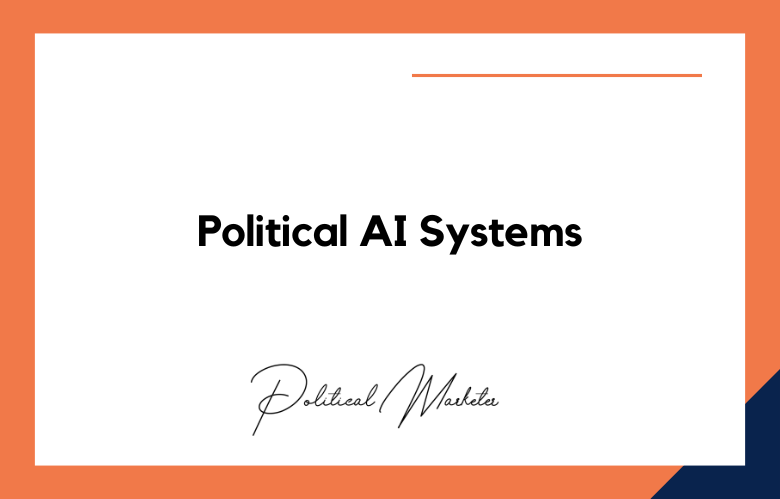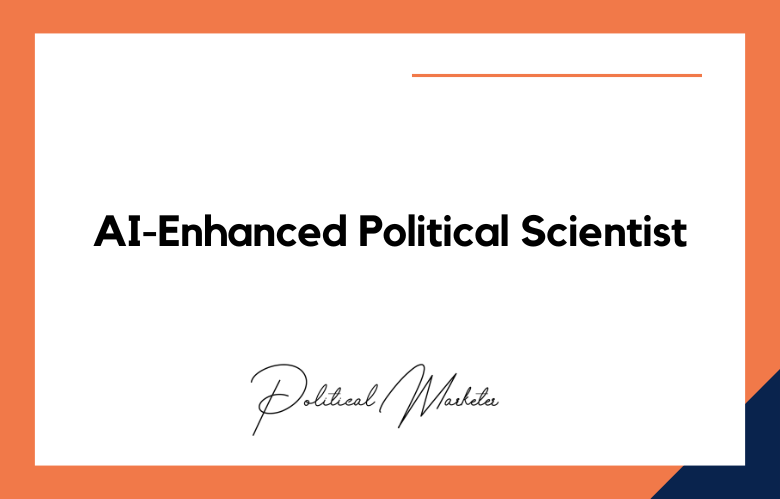Political campaigns have become more intelligent over the years, using technology to reach the electorate more effectively. Automation and big data have given rise to the latest trend in political campaigning – Artificial Intelligence (AI).
But while AI has brought efficiencies to the political advertising industry, it has also raised concerns about intrusive advertising techniques, privacy violations, and the potential misuse of personal data. Today, we deeply dive into AI-powered political advertising techniques and uncover how they change democracy.
AI-Powered Political Advertising Techniques
Personalized Targeting
Using AI in politics means that campaigns can now collect vast amounts of data about voters. This data is then used to personalize advertising messages to enhance their effectiveness. AI algorithms use predictive analysis to identify the voting patterns of the electorate and craft messages specific to their preferences. This means political ads can be created and deployed to particular demographics at scale rather than for a general audience.
While this sounds exciting for political campaigns, personalized targeting raises concerns about the potential exploitation of partial or untruthful data to manipulate voter behavior. In some instances, campaigns can learn more about an individual than they should, making it easier for advertisers to know what messages will influence that person without their knowledge.
Chatbots Messaging
Chatbots are nothing new, but their use in political advertising campaigns has taken on a new level in recent years. The use of chatbots in political campaigns has been credited to Trump’s election campaign 2016. Chatbots are now used to simulate conversations with voters, and as AI technology has developed, chatbots have become better at mimicking human interaction. They are used to answer queries, address concerns, and convey political messages to people on messaging apps.
While chatbots on social media might appear harmless political advertising, they are widespread on other less regulated platforms such as Telegram, which is traced to numerous misinformation cases led by political figures.
Facial Recognition
AI-powered facial recognition capabilities have revolutionized political advertising. Facial recognition technology can track individuals’ physical traits like age, race, and gender to determine their politics. This means that advertisers can tailor their messages using this demographic as a base to target specific groups of people with similar attributes.
Facial recognition databases can create a digital fingerprint of voters who can be targeted across various online platforms and in-person locations. Although it can provide political campaigns with more accurate data to design ads that effectively reach their desired audience, it has raised real concerns about privacy violations.
Voice Assistance
Smart Voice assistants like Alexa and Google Home have gradually become part of the political advertising landscape. Parties and candidates can use these devices to reach voters in their homes and answer political queries without leaving the couch. AI has given voice assistants a more human-like interaction ability, making them a powerful tool in political advertising.
The problem with AI-powered voice assistance is that they can record and analyze private conversations and utilize this data for advertising. This feature has raised significant concerns about privacy and misappropriation of personal information.
Predictive Analytics
AI has powered the political landscape, making data management more efficient. AI excels in predictive analytics, which analyzes voting patterns and past behavior to develop prediction models. Predictive analytics create future poll predictions by integrating voter behavior, location, and income and integrating it with social media analytics.
However, not all predictions based on AI modeling have been successful. In some cases, social media and poll data aren’t enough to accurately predict voter trends.
AI-Politico: The Rise of Intelligent Campaigns
Artificial Intelligence (AI) has brought about a dramatic shift in the way political campaigns are conducted. With advancements in AI technology, political campaigns have become more sophisticated, leveraging data-driven insights to identify and target voters effectively.
The use of AI in political campaigning is not a new concept. The 2008 presidential campaign of Barack Obama made significant use of data analytics to gain an edge over his opponents. However, the technology available at the time was rudimentary compared to what is available now. Today, AI-powered campaign tools can analyze vast data to create targeted messaging for specific voter groups.
Data Democracies: AI in Political Advertising
In recent years, political advertising has increasingly relied on AI technology to target and persuade voters. While AI has the potential to make political campaigns more efficient and effective, it also raises concerns about the use of data and the potential manipulation of voters.
One of the ways AI is used in political advertising is through micro-targeting, where ads are tailored to specific groups of people based on their data. This means that political campaigns can personalize their message to different demographics, such as age, location, interests, and political affiliation.
However, this targeting raises ethical questions, as it can lead to the manipulation of voters. For example, political ads can create false narratives or spread misinformation to specific groups of people without accountability or oversight.
The Algorithms of Politics: AI-Powered Campaign Strategies
Personalized Messaging
With the help of AI algorithms, political campaigns can now create personalized messaging for each voter. By analyzing data such as social media activity, online searches, and purchasing history, AI can determine which issues are most important to each voter and tailor campaign messages accordingly.
Targeted Advertising
AI algorithms also allow for more targeted advertising during political campaigns. By using data analysis and machine learning, campaigns can identify specific demographics or groups of voters to target with their ads. This allows for a more efficient use of resources and a higher chance of reaching potential supporters.
Predictive Analytics
Political campaigns can now use AI-powered predictive analytics to anticipate voter behavior and make strategic decisions. By analyzing past election data and current trends, algorithms can predict how certain groups of voters will vote and where to focus campaign efforts.
Social Media Monitoring
Social media has become a powerful tool in political campaigning, and AI algorithms make it easier to monitor conversations and sentiment on these platforms. By tracking keywords and hashtags related to the campaign, politicians can gain insights into public opinion and adjust their strategies accordingly.
Data-Driven Fundraising
AI algorithms can also be used for data-driven fundraising during political campaigns. By analyzing donor data, campaigns can identify potential high-value donors and personalize their fundraising appeals based on their interests and giving history.
Opposition Research
AI-powered tools have made opposition research more efficient by automating tasks such as searching public records or news articles for information on political opponents. This allows campaigns to gather valuable information in attack ads or debates quickly.
Voter Turnout Prediction
Using AI algorithms, campaigns can predict voter turnout in different areas based on demographics, past voting patterns, and current events. This information is crucial in determining where to allocate resources for get-out-the-vote efforts.
Real-Time Feedback
During events or speeches, politicians can use AI-powered sentiment analysis to get real-time feedback on how their audience responds. This allows them to adjust their messaging or delivery and potentially sway undecided voters.
Automated Fact-Checking
AI algorithms can also be used for automated fact-checking during political debates or speeches. By comparing statements made by candidates to a database of verified information, AI can quickly flag any false or misleading claims.
Voter Suppression Detection
One potential downside of using AI in political campaigns is the risk of voter suppression tactics being implemented through targeted advertising or misinformation. However, AI algorithms can detect and combat these efforts, ensuring fair and democratic elections.
Conclusion:
AI-powered political advertising techniques have changed the electoral campaigns’ landscape. While AI benefits political campaigns’ strategies, it has also raised concerns about privacy and the potential misuse of personal data.
Personalized targeting, chatbot messaging, facial recognition, voice assistance, and predictive analytics are some tools AI has given political campaigns to reach voters. Still, the controversies caused by AI in the past few years have highlighted the importance of regulation and transparency. As AI technology advances, it is increasingly important to find the right balance between using AI for political campaigns and its ethical implications on democracy.
Call: +91 9848321284
Email: [email protected]










